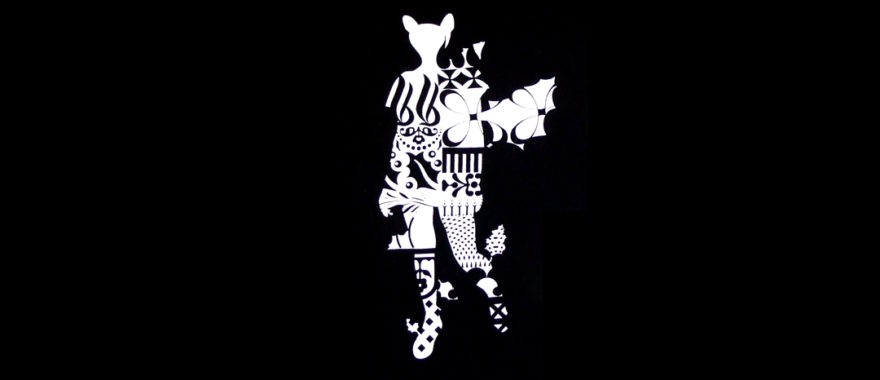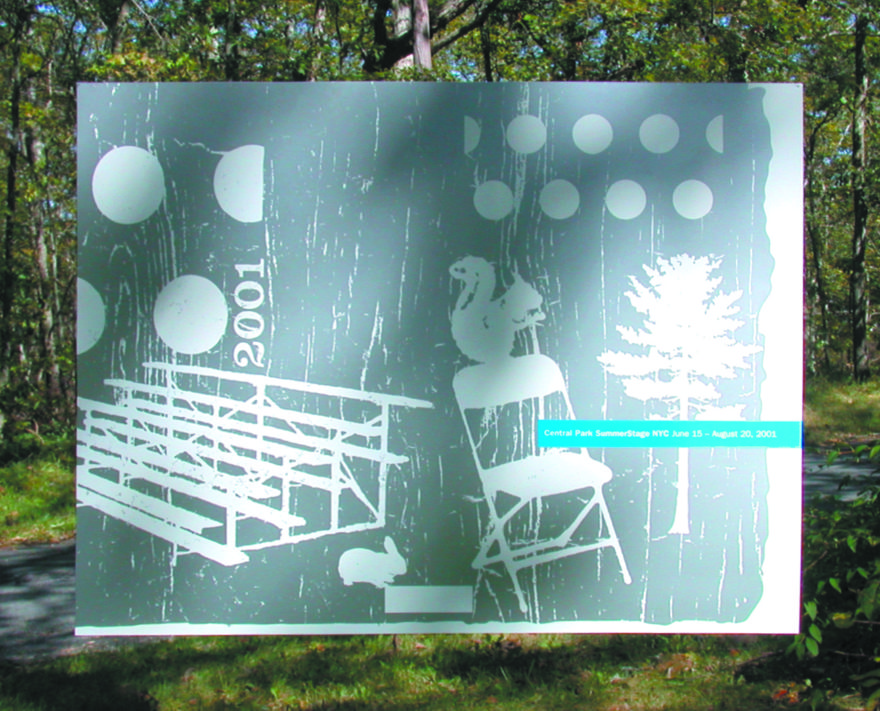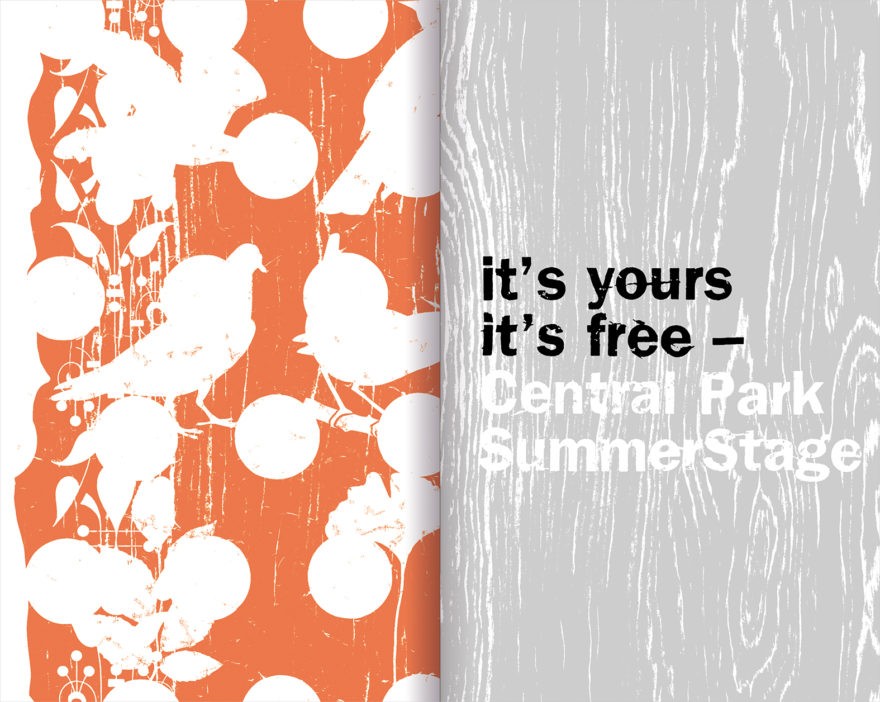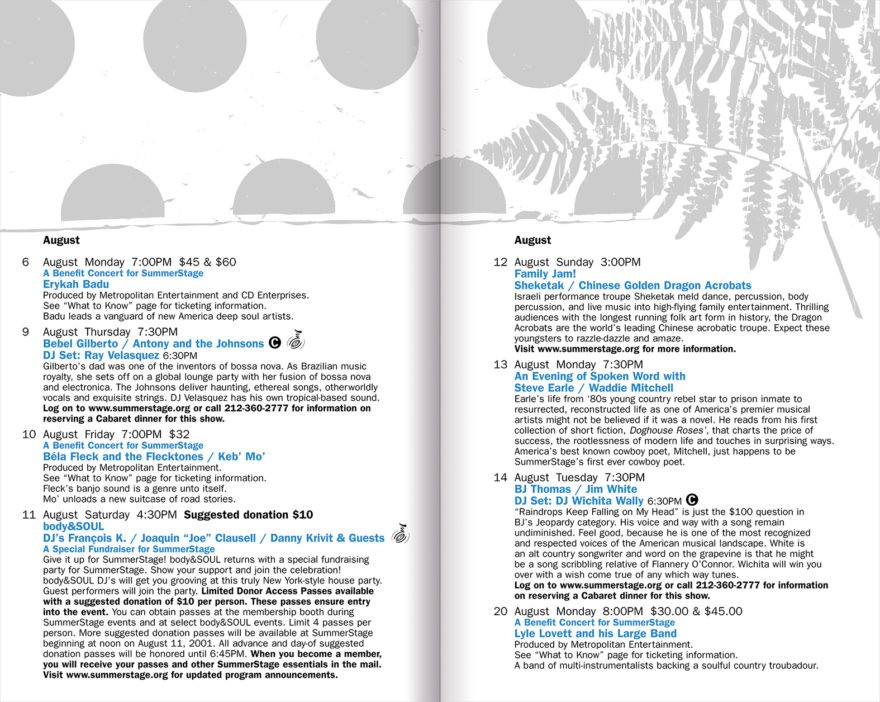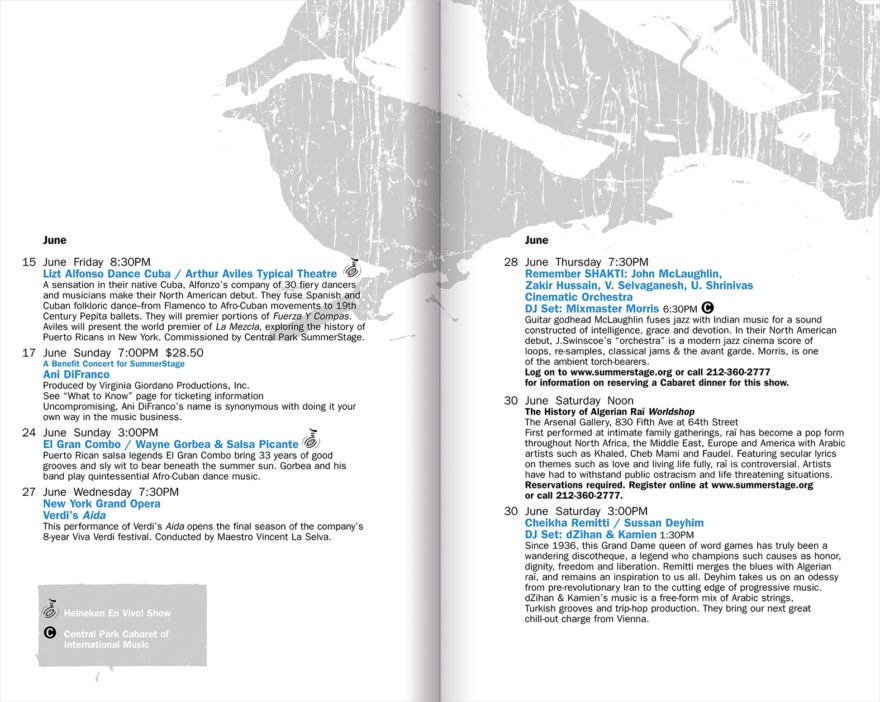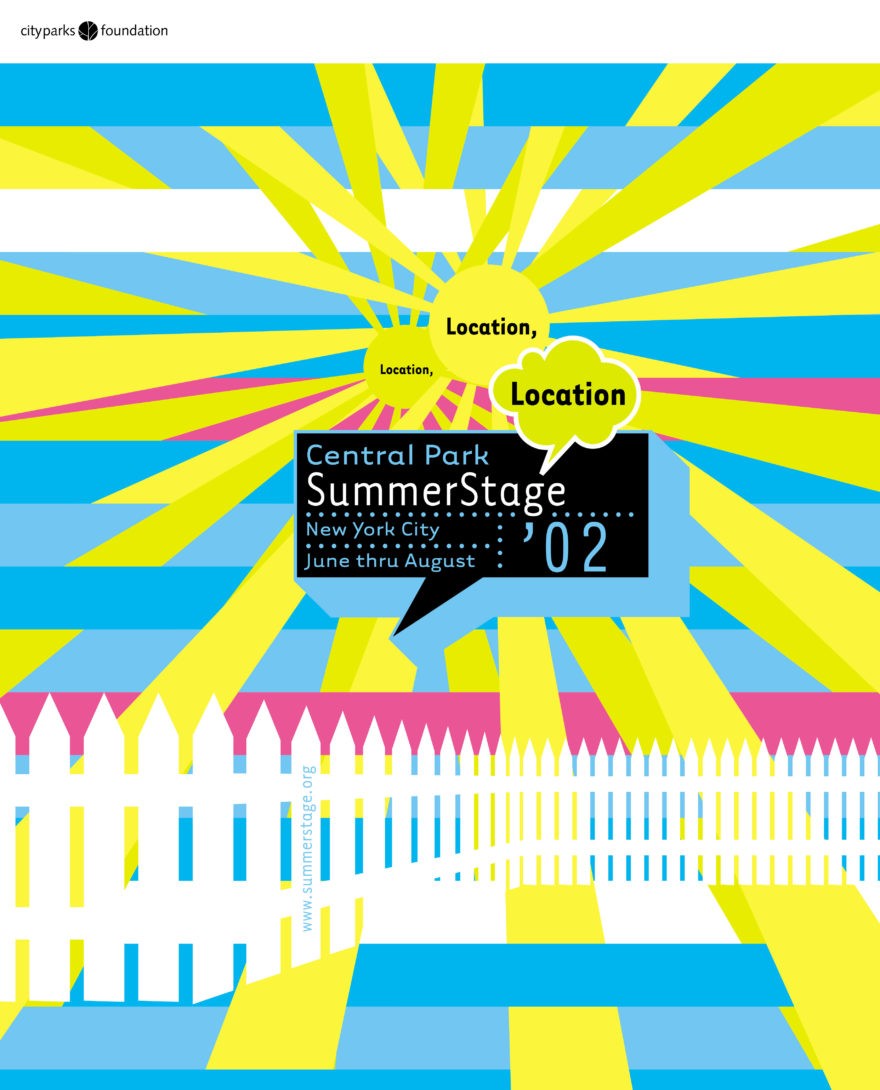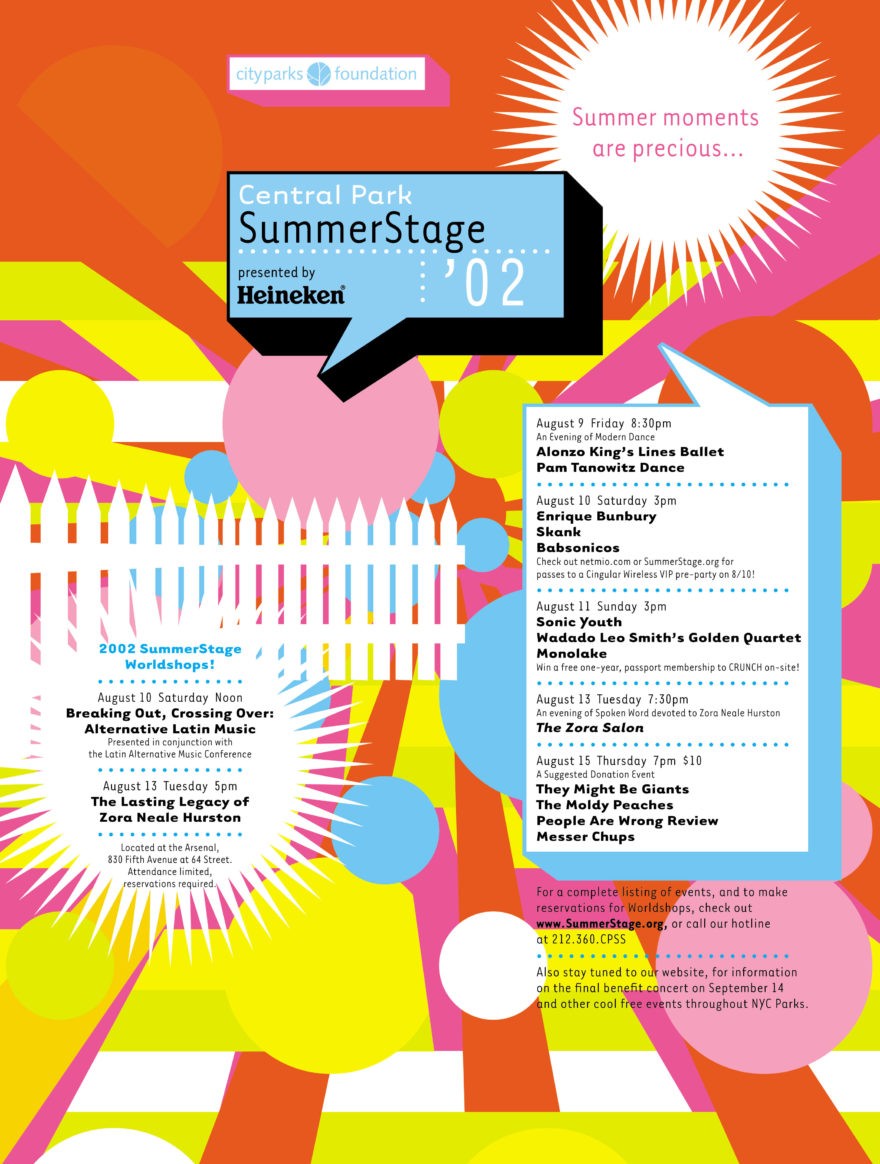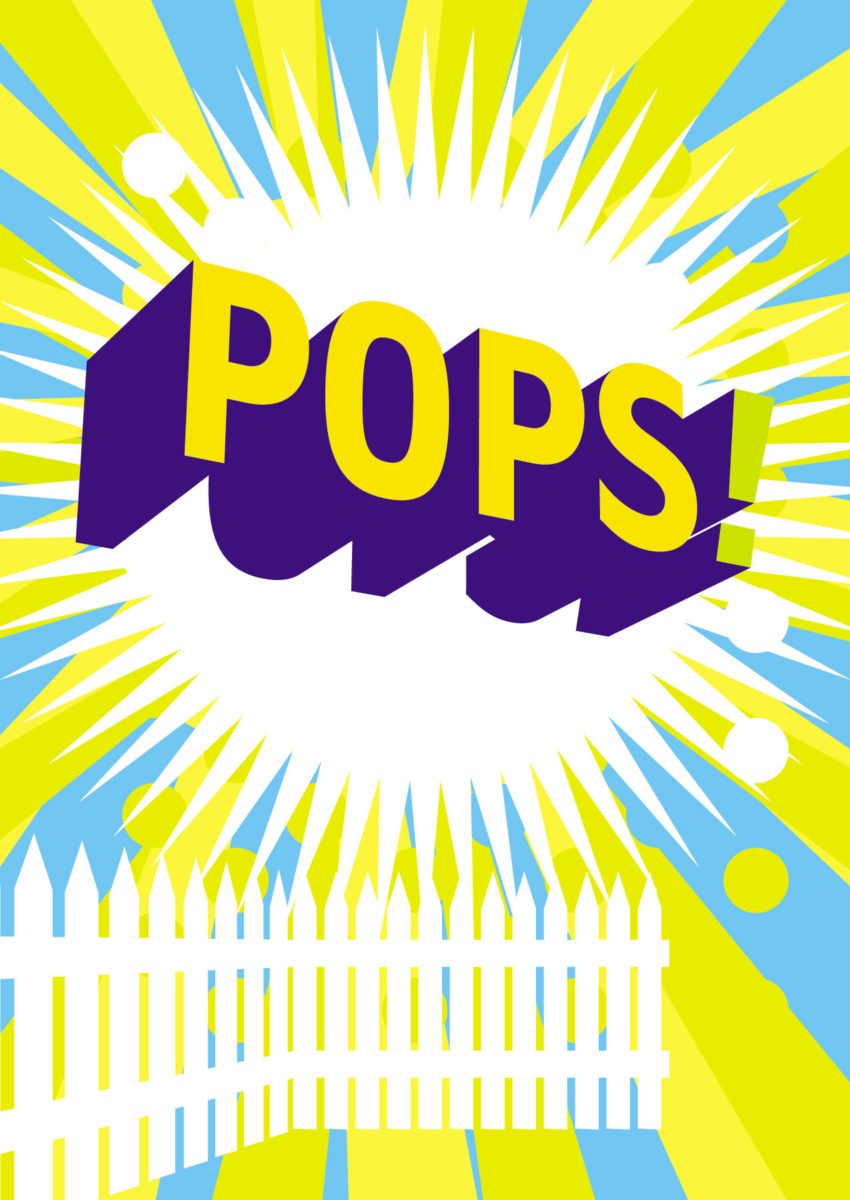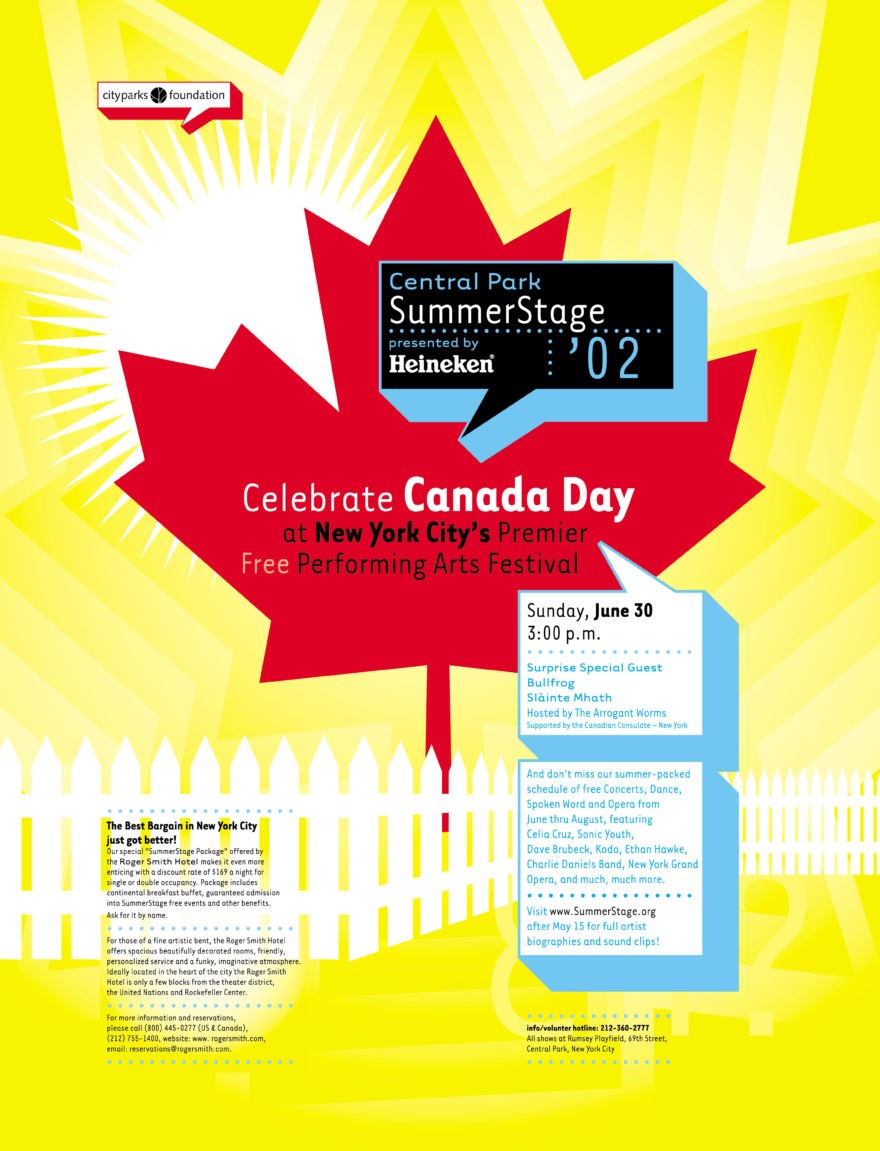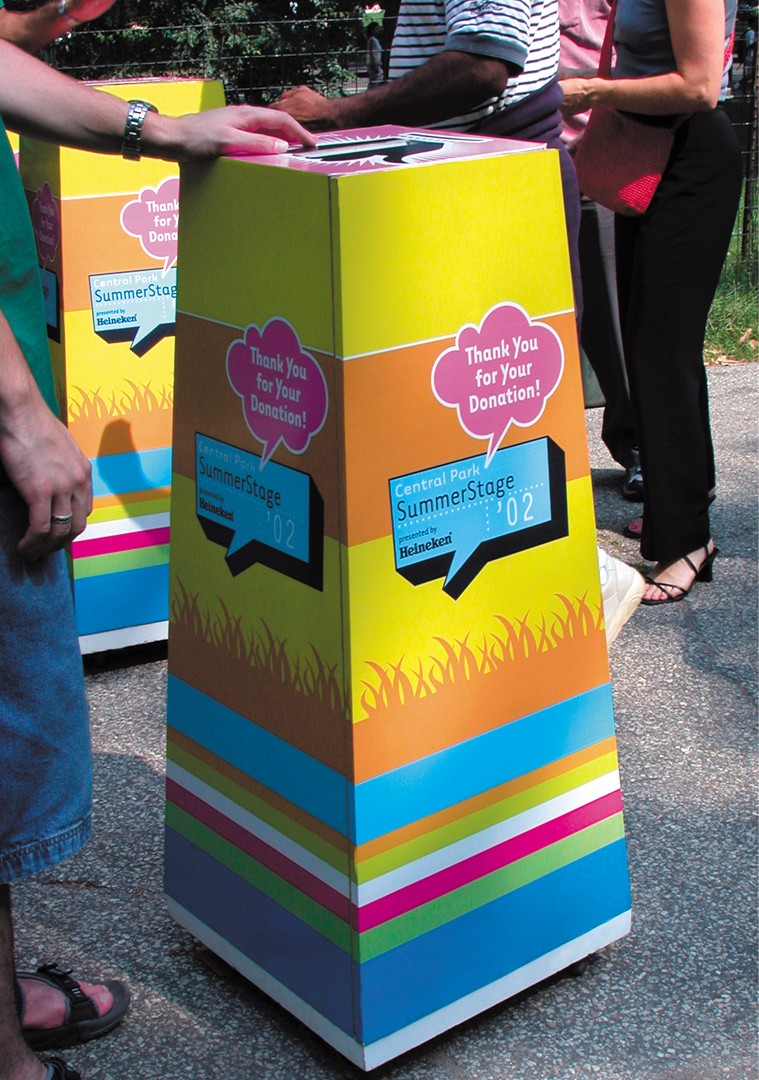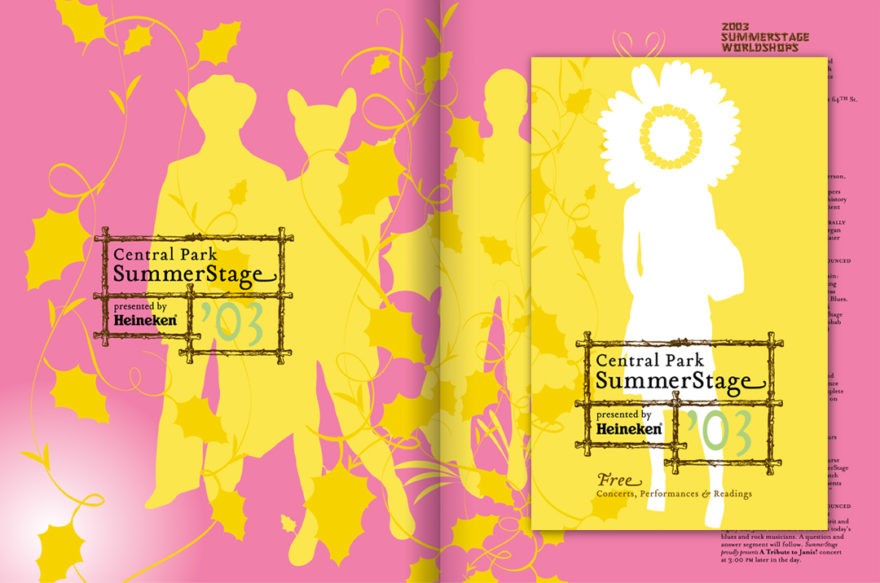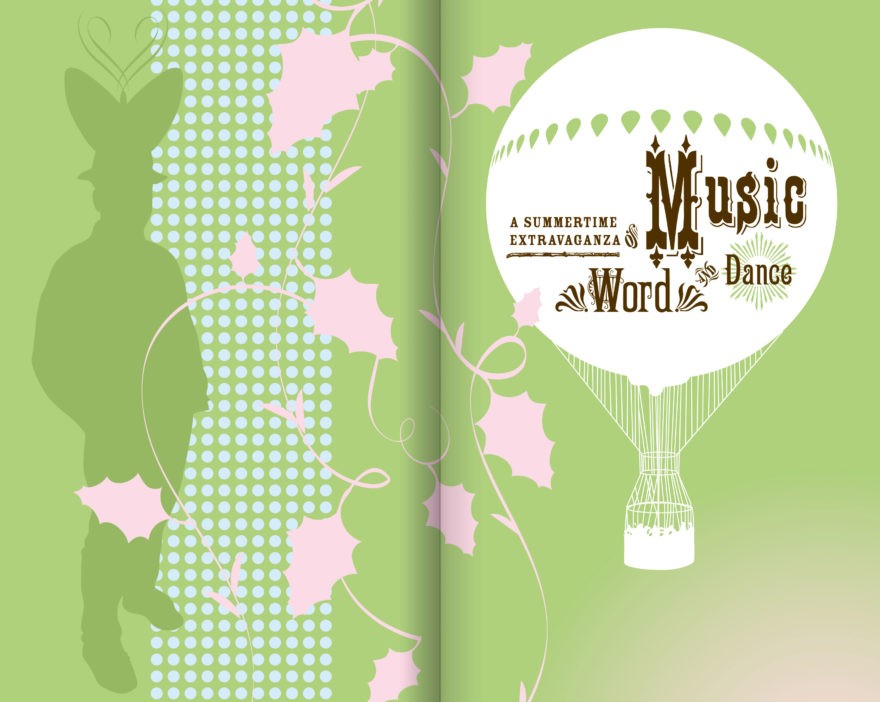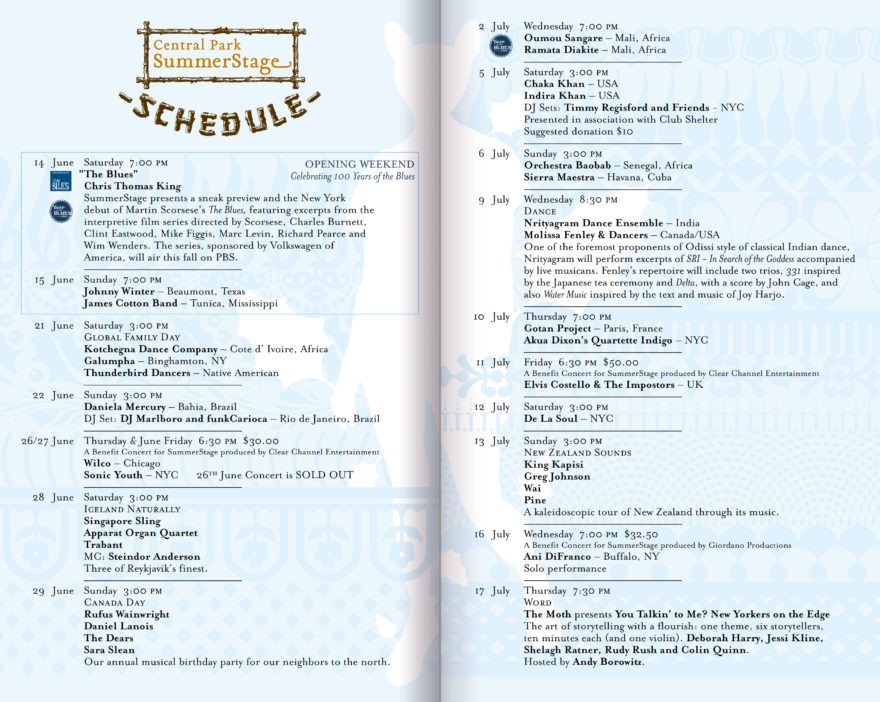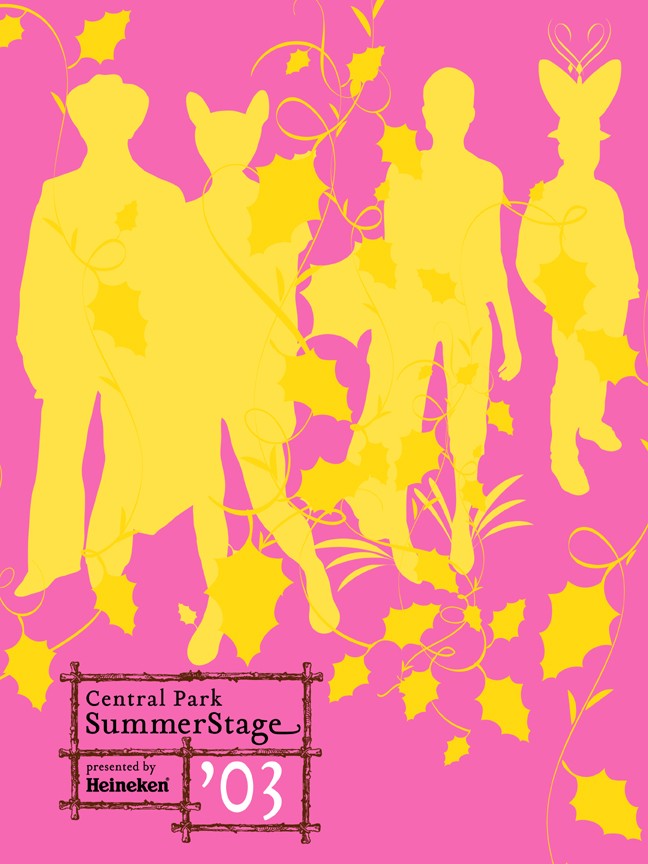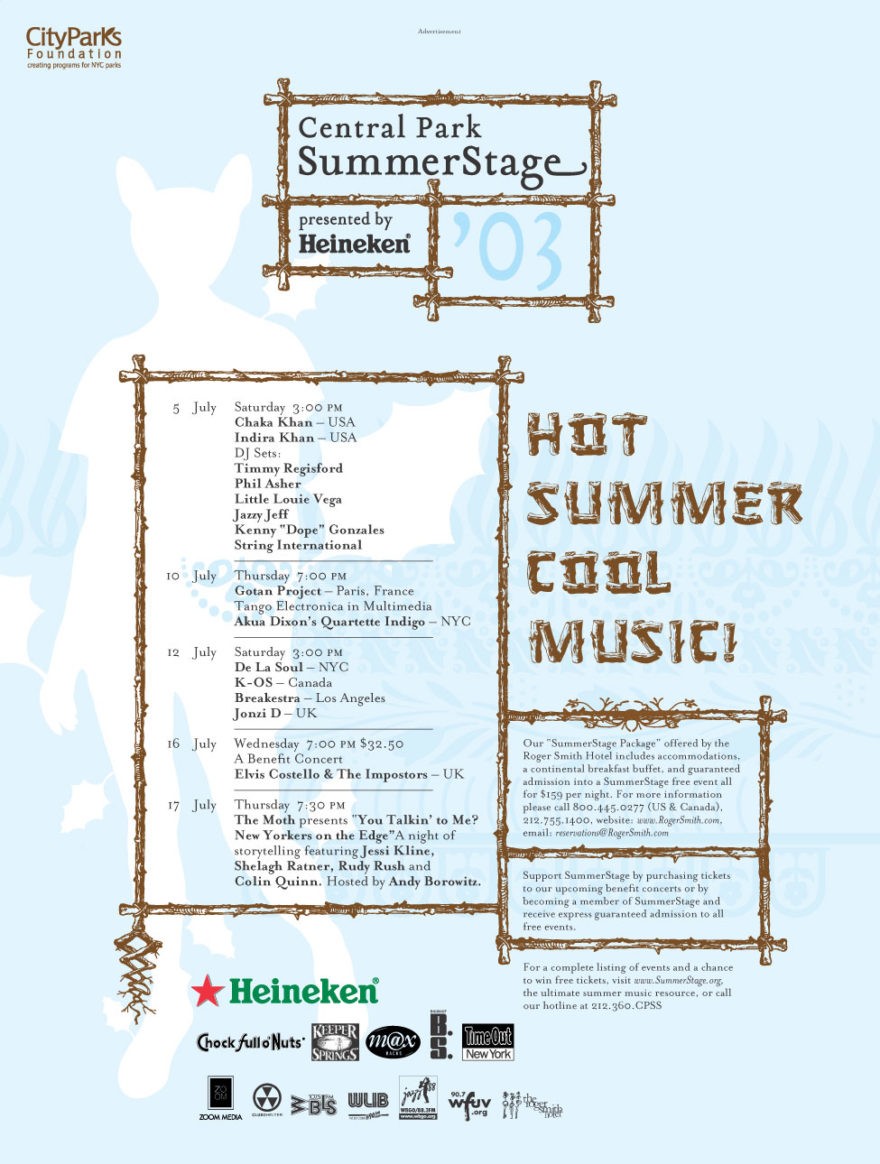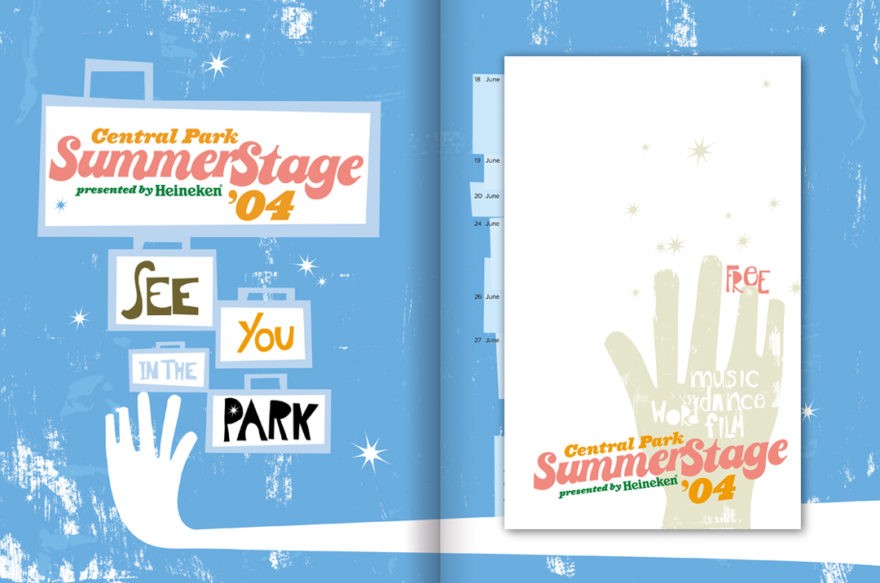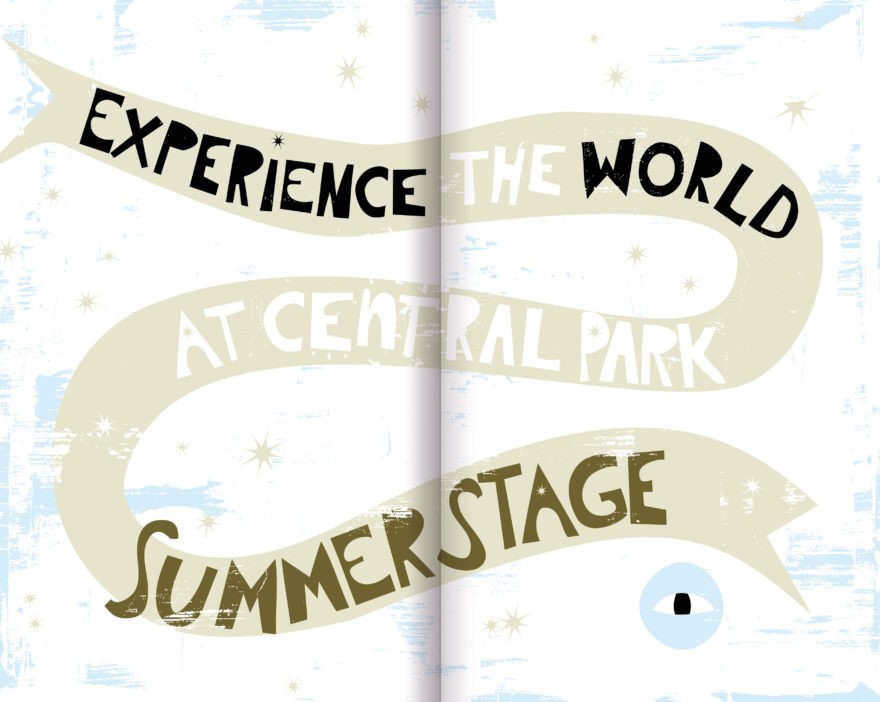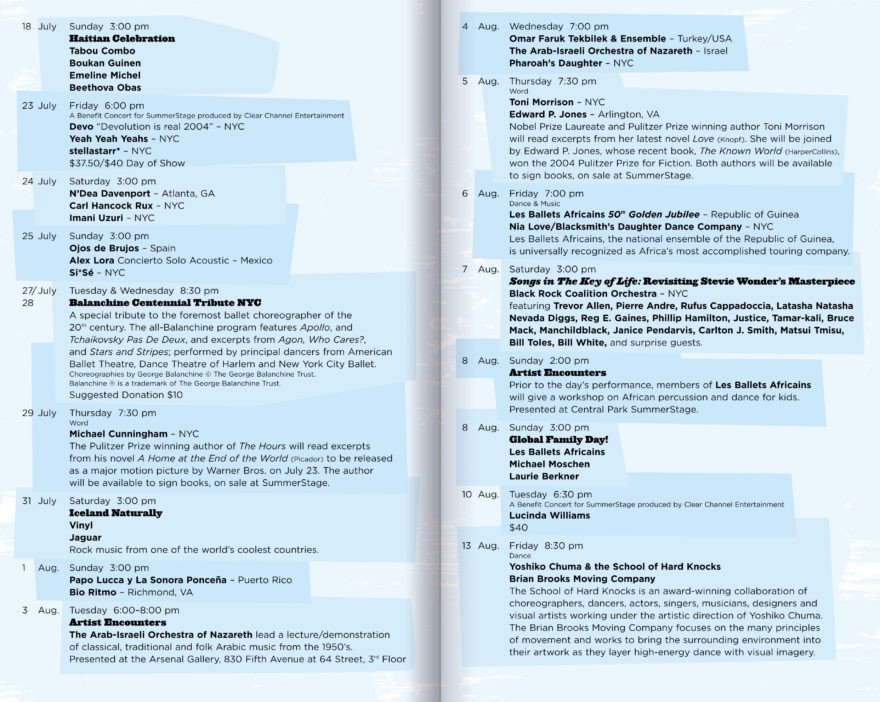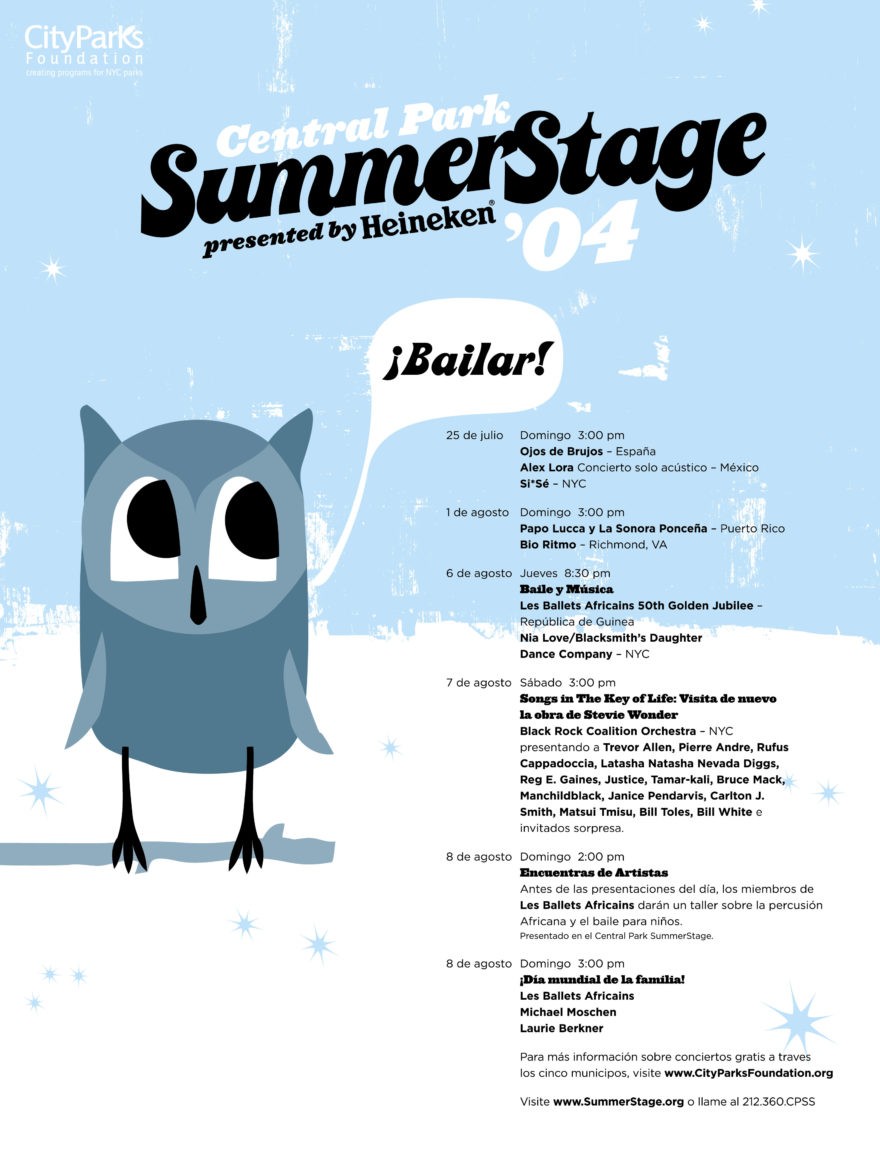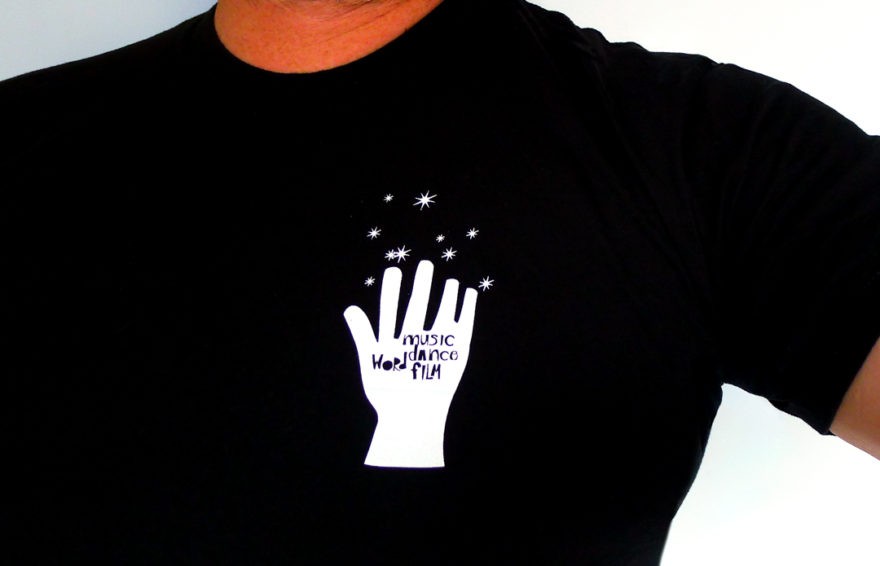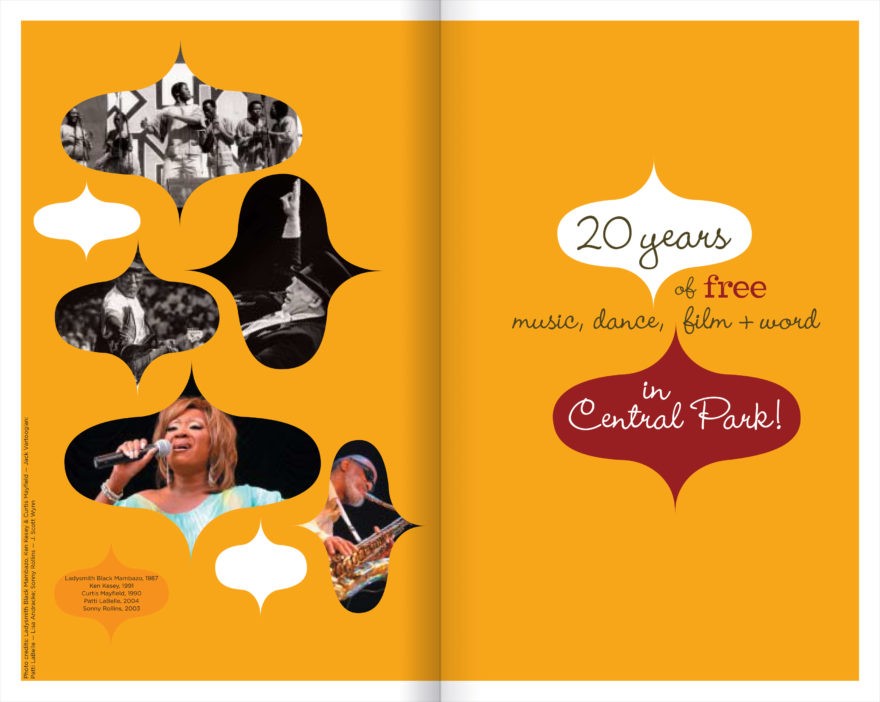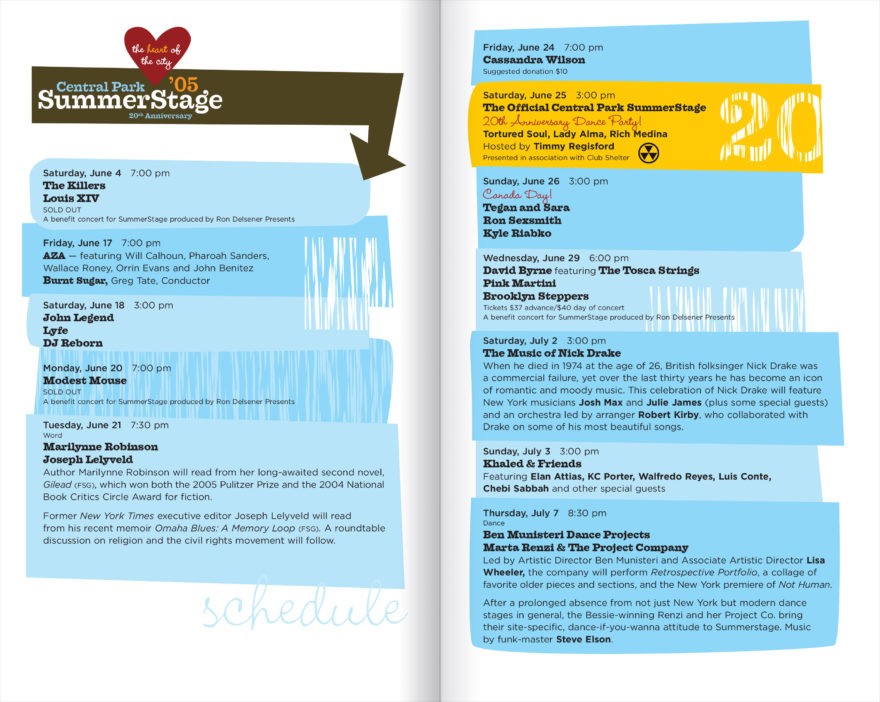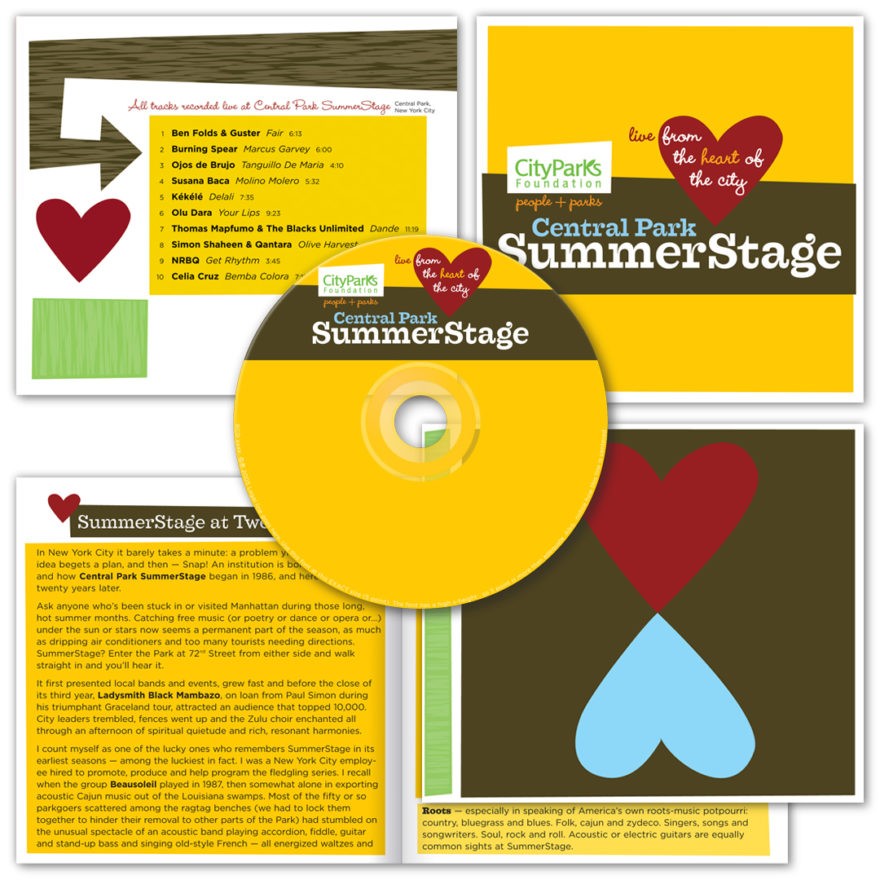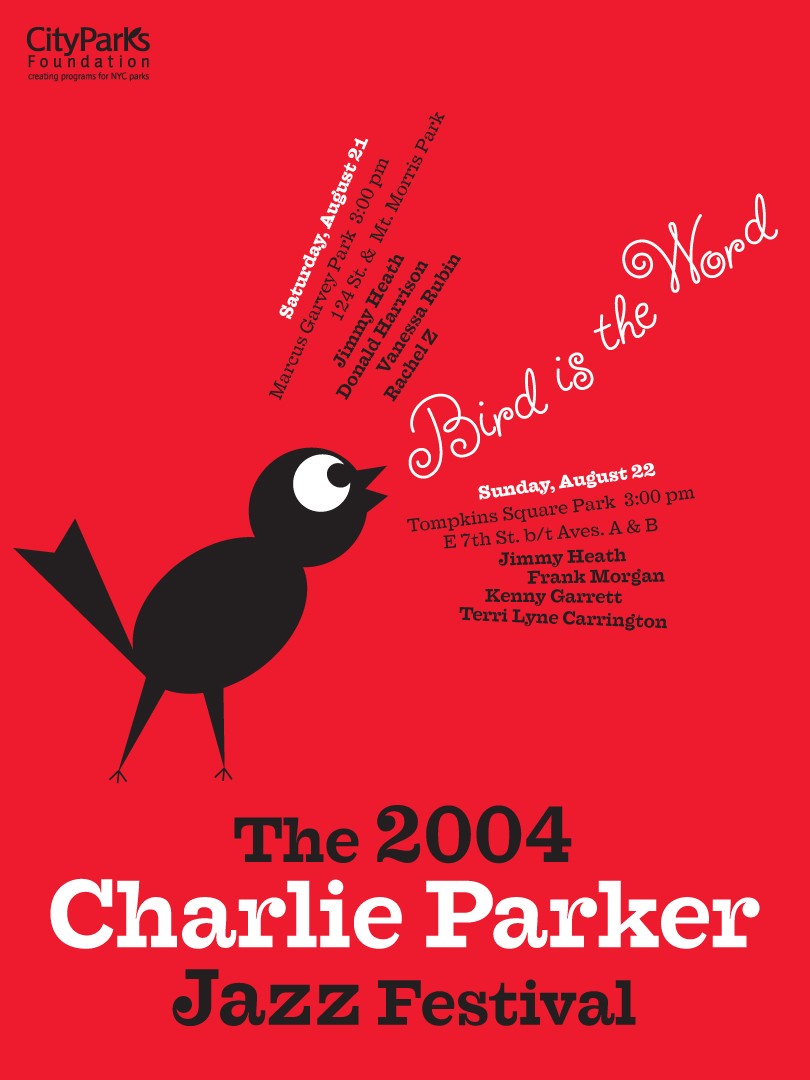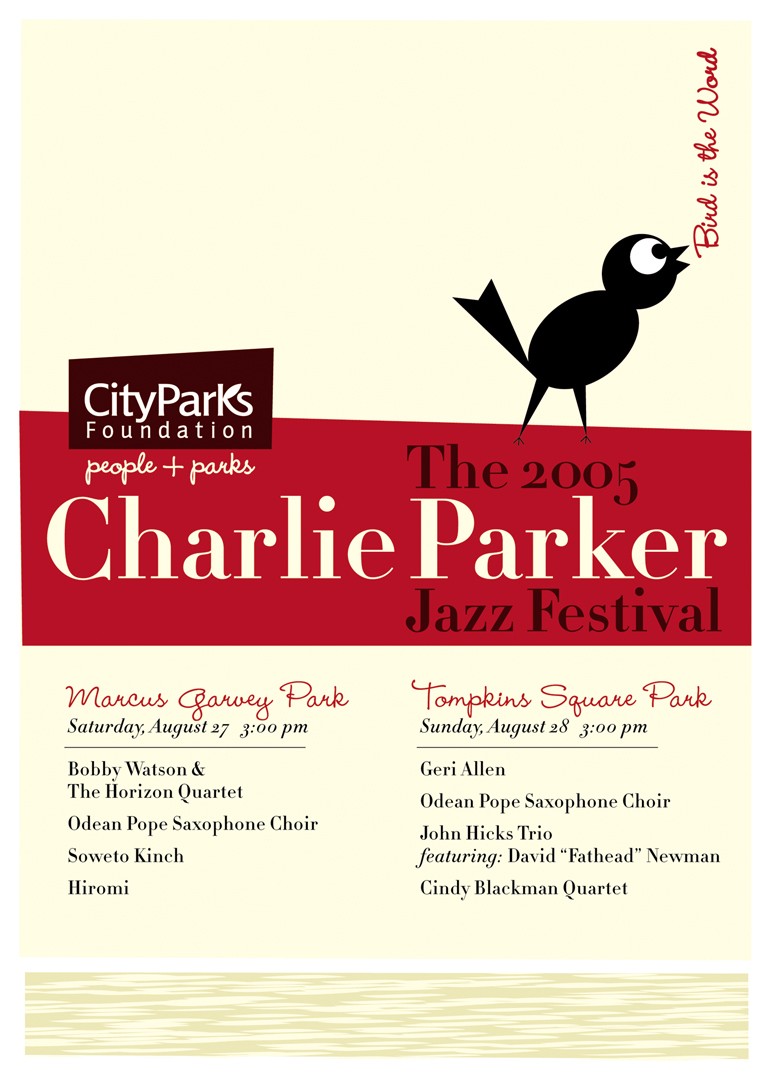If the glory of New York City is the collision and mix of people and cultures, then Central Park SummerStage is where that combination shines brightest.
SummerStage was a product of the 1980s, just after a hard decade when New York came close to bankruptcy and rents were cheap. A magical time of cross-fertilization across genres, classes and cultures. When one was measured by ambition and talent, rather than bank account. When you could attend an obscure loft performance and find yourself sitting next to John Cage.
Central Park SummerStage was originally programmed by the Central Park Conservancy — a public/private group dedicated to bringing the Park back from decades of decline. Parks Commissioner Henry J. Stern and administrator Elizabeth Barlow Rogers intended the first series as an way to revitalize the central mall, which, according to Mr. Stern, was rife with “drugs and a bad element.”
At the beginning, founding director Joseph Killian had a mission to “bring the downtown arts scene uptown.” But by 2000, SummerStage’s audience had grown to a point where they needed to speak to a broader range of people, which in effect was the City of New York and beyond
That is when our involvement began, starting with the death of a poster.
Previously, SummerStage had produced a series of two-sided posters which jumbled together schedule, sponsorships, park rules, and donation coupons. They were hard to find and we had never, ever seen one displayed in a friend’s home or office. So we proposed taking the same amount of paper and publishing a brochure which could fit into someone’s pocket and have a longer lifespan.
This required about a month of conversations and prototyping before it was approved as a one-time trial.
The result was immediately positive. Brochures were easier to distribute, and the audience grew significantly. Plus, the visual clarity and narrative of the format made it easier to expand individual elements across other marketing formats and merchandise.
This platform also allowed SummerStage to develop their media partnerships, increasing advertising from a handful to approximately 50-60 ads across a variety of publications and audiences — from mass-media to specific DJ-culture magazines.
In 2004, after the success of our previous years, City Parks Foundation asked us to create material for their Charlie Parker Festival and City Parks Concerts. This set the stage for the 2005 season, when we were asked to unify all three under a more cohesive City Parks Foundation brand. 2005 was also the 20th anniversary of SummerStage, so a commemorative compilation album of notable performances from previous years was produced.
Eventually SummerStage’s individuality was fully absorbed into the City Parks Foundation’s brand to the point where it no longer produces the variety of materials it did under our watch. It had become too big, the lines to get in were too long, and the number of fund-raising concerts had begun to overshadow the free ones. The annual audience count was in the hundreds of thousands and had drawn increased attention from city officials, neighbors, promoters, and sponsors. In a way, it had become too successful — something we partially claim responsibility for.
Now, SummerStage is used as a catch-all for a series of concerts in 17 parks across all five boroughs. Thankfully, the sensibility which inspired this work still lives in the City’s outer boroughs, ready to coalesce into something new.
Until that happens, our hearts burst with gratitude for having served the SummerStage ideal, the amazing performers and the people of New York City. Because fewer things are more satisfying than creating such a meaningful place for so many people.
